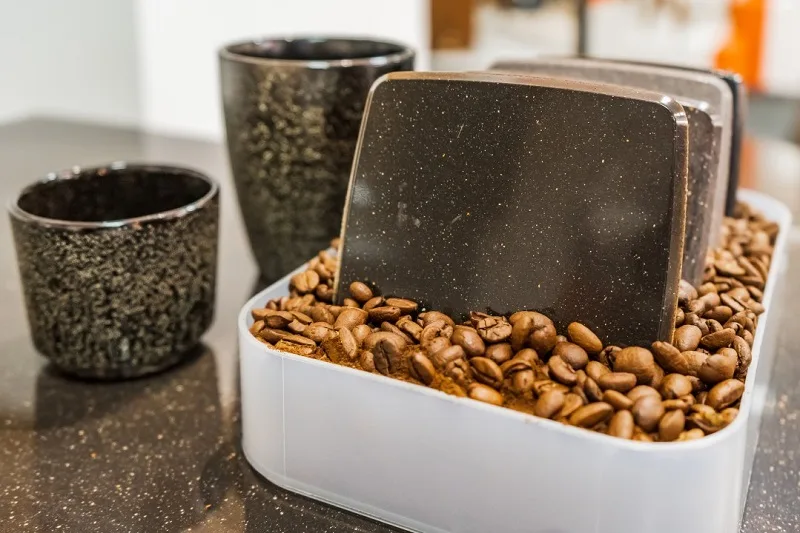
Recycling of Coffee Waste Technology
Coffee is one of the most popular beverages globally, generating a substantial amount of waste each year. The recycling of coffee waste technology presents an innovative solution to manage this waste efficiently. This article delves into the inception, design, effectiveness, broader applications, and future prospects of this technology.
Inception of Coffee Waste Recycling Technology
The technology for recycling coffee waste emerged in the early 21st century, with the growing awareness of environmental sustainability. Researchers and companies began exploring methods to repurpose the massive amounts of coffee grounds discarded annually. Initial experiments focused on converting these wastes into compost, but technological advancements have since expanded the possibilities.
One of the significant milestones was the development of biofuel from coffee waste in 2013. This breakthrough demonstrated the potential of coffee grounds beyond mere composting. The technology has since evolved, encompassing various applications such as biochar production, bioplastics, and even cosmetics. These advancements have marked a turning point in how coffee waste is perceived and utilized, pushing the boundaries of recycling technology.
Design and Functionality
The design of coffee waste recycling technology revolves around several processes, each targeting a specific end product. The primary method involves collecting coffee grounds from cafes, restaurants, and households. These grounds are then subjected to drying and sterilization to prepare them for further processing.
One of the prominent technologies used is anaerobic digestion, which breaks down the organic material in coffee waste to produce biogas. This biogas can be utilized as a renewable energy source. Another significant method is pyrolysis, where coffee grounds are heated in the absence of oxygen to produce biochar, a valuable soil amendment. Additionally, advancements in bioplastics have enabled the conversion of coffee waste into biodegradable plastics, offering a sustainable alternative to conventional plastics.
Addressing Environmental Challenges
The recycling of coffee waste technology is designed to address several pressing environmental issues. Firstly, it helps reduce the volume of waste ending up in landfills. Coffee grounds, when decomposing in landfills, release methane, a potent greenhouse gas. By recycling this waste, methane emissions can be significantly reduced.
Secondly, the technology contributes to the circular economy. By repurposing coffee waste into valuable products, it promotes resource efficiency and reduces the reliance on virgin materials. This approach aligns with global sustainability goals and helps mitigate the environmental impact of coffee consumption.
Moreover, the production of biofuels and bioplastics from coffee waste provides an alternative to fossil fuels and traditional plastics, both of which have substantial carbon footprints. This shift not only reduces carbon emissions but also supports the development of greener technologies and industries.
Effectiveness of the Technology
The effectiveness of coffee waste recycling technology is evident in its diverse applications and the tangible environmental benefits it offers. For instance, the conversion of coffee grounds to biochar has shown significant improvements in soil health and fertility. Biochar enhances soil structure, increases water retention, and provides essential nutrients to plants, making it a valuable tool for sustainable agriculture.
In the energy sector, biogas produced from coffee waste serves as a renewable energy source, reducing dependency on non-renewable resources. This biogas can be used for heating, electricity generation, and even as a fuel for vehicles, showcasing its versatility and effectiveness.
The technology also supports waste management efforts by providing a viable solution for the disposal of coffee grounds. By transforming waste into useful products, it alleviates the burden on waste management systems and contributes to cleaner urban environments.
Overall, the effectiveness of this technology lies in its ability to turn a common waste product into multiple valuable resources, thereby promoting environmental sustainability and resource efficiency.
Broader Applications
Beyond its primary applications, coffee waste recycling technology has the potential for broader uses. In the cosmetic industry, coffee grounds are being used to produce exfoliants and skincare products. The natural properties of coffee, rich in antioxidants and beneficial compounds, make it an excellent ingredient for skincare formulations.
Additionally, coffee waste can be used in the production of dietary supplements and food additives. The high nutrient content of coffee grounds, including minerals and antioxidants, can enhance the nutritional profile of food products. This application not only adds value to the food industry but also promotes healthier dietary options.
Another emerging application is in the construction industry. Researchers are exploring the use of coffee grounds as a component in building materials, such as bricks and concrete. The inclusion of coffee waste in these materials can improve their thermal properties and sustainability, presenting a novel approach to eco-friendly construction practices.

Future Prospects
The future prospects of coffee waste recycling technology are promising, with ongoing research and development opening new avenues for its application. One of the anticipated advancements is the integration of this technology with smart waste management systems. By leveraging IoT (Internet of Things) and AI (Artificial Intelligence), the collection and processing of coffee waste can be optimized, enhancing efficiency and scalability.
Furthermore, as the demand for sustainable practices continues to rise, the adoption of coffee waste recycling technology is expected to grow. Governments and industries worldwide are likely to implement policies and incentives to promote waste recycling, creating a conducive environment for the technology’s expansion.
In conclusion, the recycling of coffee waste technology represents a significant step towards environmental sustainability. By transforming a common waste product into valuable resources, it addresses critical environmental challenges and offers diverse applications across various industries. With continued innovation and support, this technology has the potential to play a pivotal role in the global efforts towards a greener and more sustainable future.
